Related Topics
Northern Overland Escape Path of the Philadelphia Tories 1 of 1 (16)
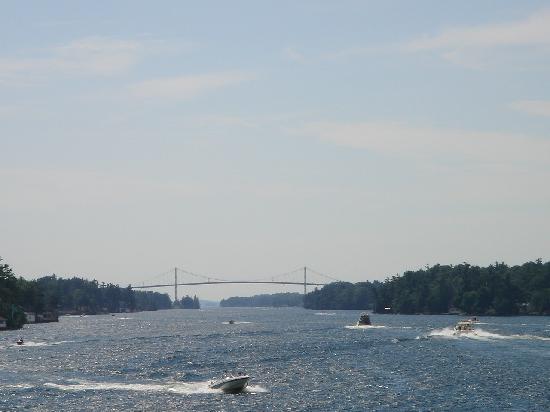 Grievances provoking the American Revolutionary War left many Philadelphians unprovoked. Loyalists often fled to Canada, especially Kingston, Ontario. Decades later the flow of dissidents reversed, Canadian anti-royalists taking refuge south of the border.
Grievances provoking the American Revolutionary War left many Philadelphians unprovoked. Loyalists often fled to Canada, especially Kingston, Ontario. Decades later the flow of dissidents reversed, Canadian anti-royalists taking refuge south of the border.
Central Pennsylvania
"Alabama in-between," snickered James Carville, "Philadelphia, Pittsburgh, and Alabama in-between."
Cornell, For the Birds
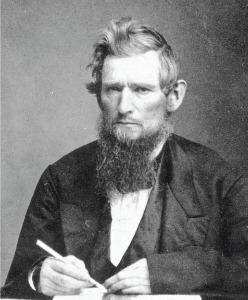
|
| Senator Ezra Cornell |
Cornell is in Ithaca, at the foot of Lake Cayuga. It's New York's land grant college, which at first seems a funny way of expressing it, until you learn that during the Civil War, Congress declared that at least one college in each state would receive a grant of federal land (which they could sell) for advancing the working class through agricultural and mechanical education. Cornell is thus New York's "A and M". The whole idea is central to the Whig philosophy that social classes were not a permanent status, but rather only stages in the evolution of penniless immigrants into managers, and thence into entrepreneurs and owners.
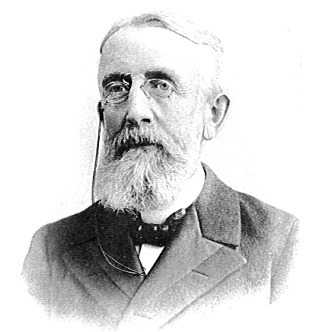
|
| Sen. Andrew White, President |
The Whigs didn't hate poor people, they just wanted to get rid of that class by showing them how to get rich. Although the Republican Party was largely the successor to the Whig party, Lincoln remained philosophically an ardent Whig; the emancipation of slaves was a bold and imaginative extension of the Whig ideal. The striking thing about the founding of Cornell University is that both of New York's U.S. senators were enthralled by the land grant college idea. Ezra Cornell drove the legislation through Congress, and Andrew White became Cornell's first president; both of them devoted their later lives to it. Cornell donated most of his substantial fortune to its establishment and applied his unusual financial talents to investing the proceeds of the land grant.
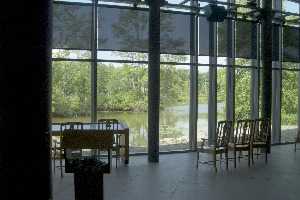
|
Devotion to self-improvement of the working classes helps explain why many of Cornell's departments sound a little out of place in the Ivy League, hotel management being the first to come to mind. However, it must have been the two senators who instilled in this project the idea of striving for excellence. If you manage a hotel, be the very best hotel manager in the world if you have it in you. Very likely that's the bug that bit the Johnson family, whose name is on the Johnson School of Management, the Johnson Museum. And the Imogene Powers Johnson Laboratory for Ornithology, which is our present topic.
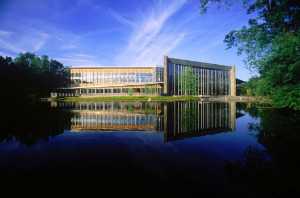
|
| Cornell Laboratory for Ornithology |
They say it took the architects six years just to design the 80,000 square foot building overlooking the wetlands on 220 acres of the bird sanctuary, otherwise known as the Sapsucker Woods. The public doesn't often see most of the interior of the building, which is devoted to working scientists, and their extensive effort of computerizing the voluminous efforts of volunteer bird watchers up and down the Appalachian Flyway. The result has been a set of coherent conclusions about what is happening to ecology, as illustrated by ornithology. That's only one of many scientific projects underway. What the public does see are two things: the most elaborate bird-watching museum anywhere, and one of the most imaginative bird-hobbyist stores. Between them, these two features are designed to make a bird lover out of the meanest curmudgeon, show him how to arrange an indoor watching area, buy books and magazines about how to do it, and offer for sale the most advanced and clever devices and supply. If you hate birds, or even if you are merely indifferent to them -- this is the place to come to Jesus.
Originally published: Wednesday, August 04, 2010; most-recently modified: Wednesday, May 15, 2019